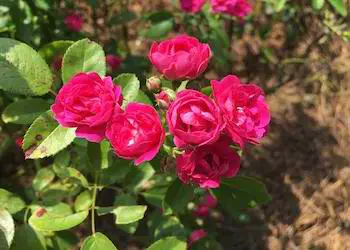Mini roses can be once bloomers or continuous bloomers, but regardless of the variety, how do you keep mini roses blooming?
To keep mini roses blooming at their full capacity and in a healthy and sustainable manner, will require some basic – but regular – maintenance. Which essentially falls into proper sunlight, sufficient watering, deadheading of spent blooms, and careful pruning among other points.
Here’s a quick list, then we’ll take you through the process so you can keep mini roses blooming for longer.
- Select the correct Hardiness Zone, USDA 4-11
- Find and maintain a sunny location and rotate regularly
- Ensure your pot has sufficient drainage
- Use only quality loam soil
- Avoid underwatering and overwatering
- Add rose fertilizer once a month
- Deadhead blooms regularly
- Prune at the right times.
- Correct winterizing
Depending on the variety, mini roses’ bloom time can fall into two categories; single bloomers and continuous bloomers.
It’s probably obvious, but for the mini rose blooming season, single bloomers bloom only once per season, and continuous bloomers will continue to bloom throughout the season – which ranges from mid-spring and continues on through early fall.
This may sometimes vary though, depending on the country and the hardiness of your location. You can find out more about when roses bloom based on your country, state, or city.
If your mini rose plant is not blooming at all, then you’ll need to read this article on mini roses not blooming.
But also, if you’re wondering if your mini rose will bloom in its first year, and how to help it, then read this guide to first year blooming.
Keep mini roses blooming🌹
Regardless of how often they bloom, there are some simple maintenance and routine care practices that can help you encourage full blooms …and keep them blooming throughout their season.
Let’s go through the list of such tips and hints that can upgrade your mini rose gardening skills.
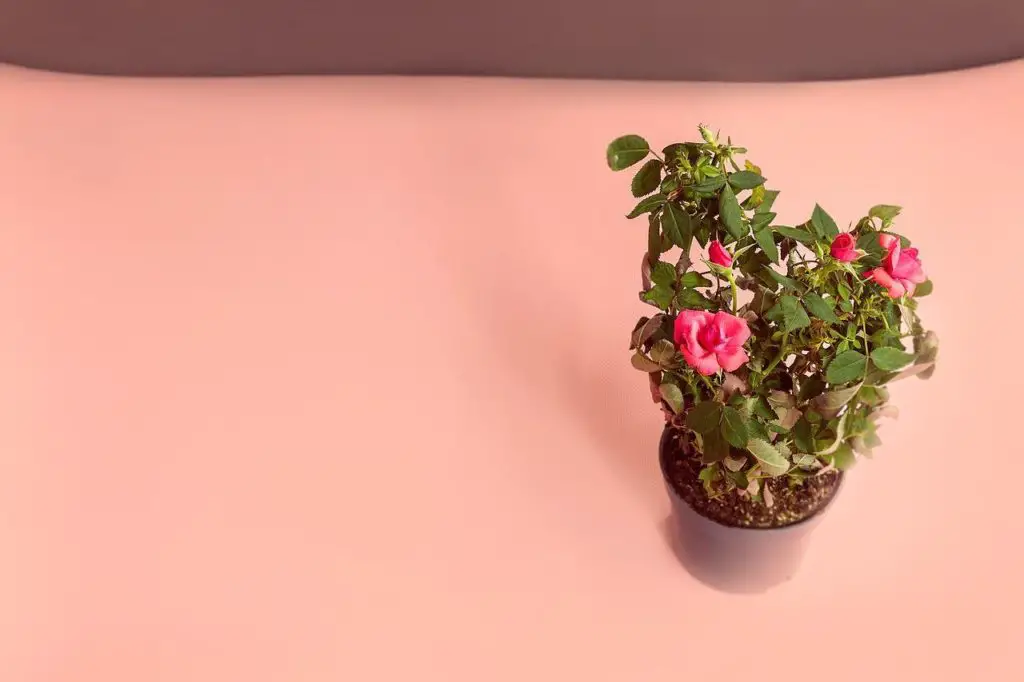
1. Select the correct hardiness zone
Mini roses blooming depends to some degree on the USDA growing zones, they will generally thrive in 4 – 11.

But selecting the right USDA zone will give your miniature roses a great start as it will simply be a more ideal climate from the outset.
This is of course more important regarding growing your mini roses outside but can affect inside growing conditions too. Here’s whether or how you can grow your mini roses outside.
2. Find and maintain a sunny location
As we have emphasized enough, just like any rose variety, mini roses need full sunlight to grow, for the best chance of full bloom. And most importantly to keep mini roses blooming throughout the season.
Insufficient sunlight can firstly slow down growth which can give out smaller and fewer blooms than your mini rose plant can potentially grow.
Less sunlight will also reduce the capability of your plant to keep the blooms for longer throughout the season.
For continuous bloomers, insufficient sunlight can make them bloom only during the season or reduce the occurrence of blooms altogether.
Try to give your mini rose plant at least 6-8 hours of direct full morning sunlight.
If you grow the plant indoors, bring it out for plenty of morning sunlight, or locate your plant inside the house where they have access to full sunlight.
For a more comprehensive guide on this area of sunlight care, our article on how much sunlight mini roses need will give you more help in achieving this.
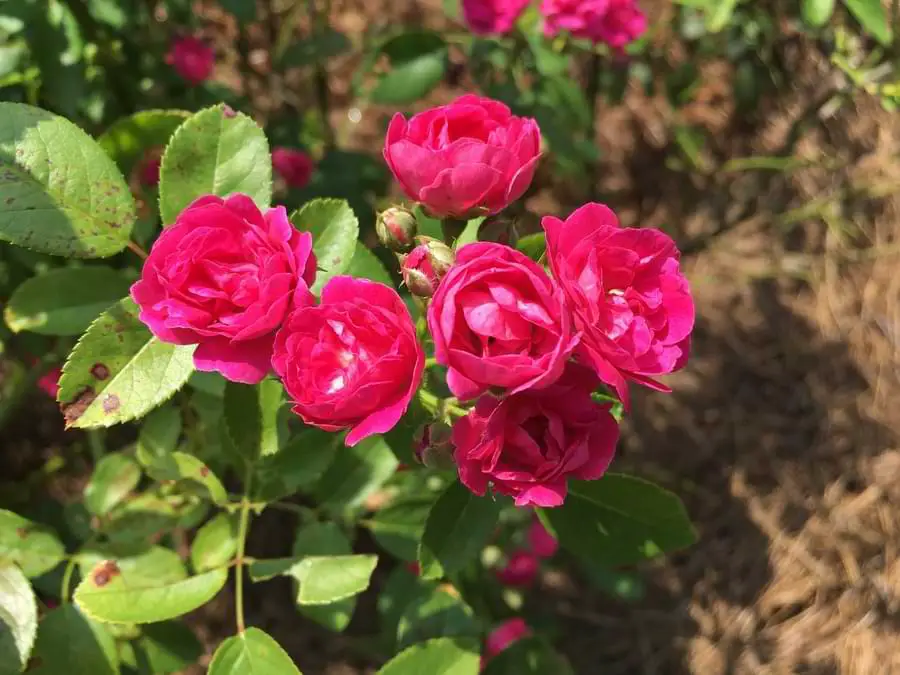
3. Sufficient drainage
Just about all roses, perhaps with the exception of rambling roses, like their soil environment to drain well. You’ve perhaps heard the expression that roses do not like wet feet. And this is true.
Whichever type of pot you choose, make sure it contains sufficient drainage holes that allow enough water to drain through, while still leaving the soil moist so the roots can draw on it at their leisure.
4. Use quality soil
Like most plants, roses are more likely to thrive in soil that is high quality, with plenty of organic matter and that drains well.
Roses prefer loamy soil that provides sufficient nutrients. You can find out more about the best soil for mini roses here.
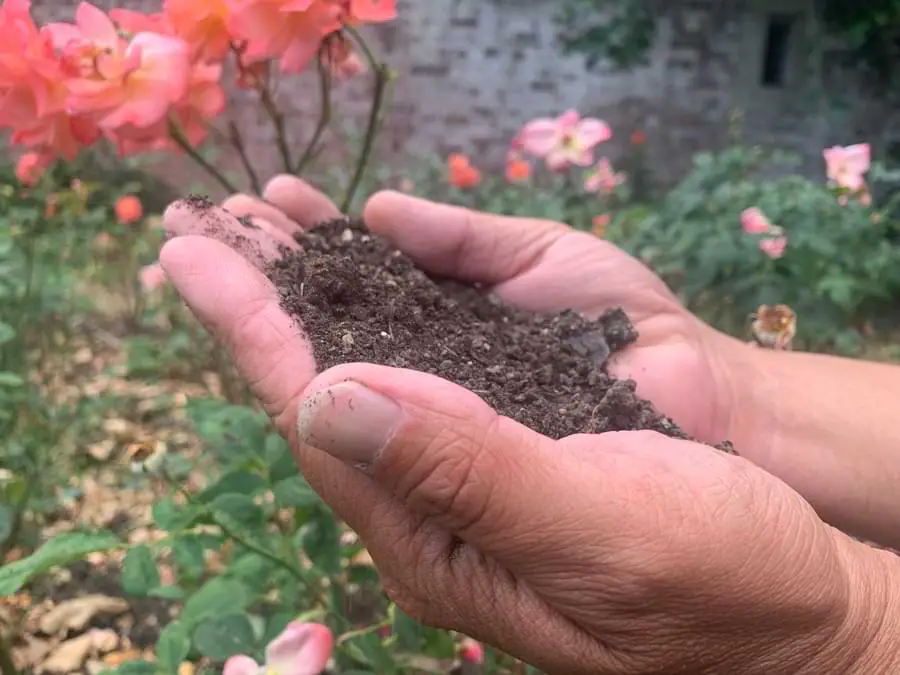
5. Avoid underwatering and overwatering
As most mini rose varieties start their blooming season in summer, it inevitably calls for a strict watering routine to keep mini roses blooming throughout the season.
However, keep in mind that both underwatering and overwatering are not great for your plants in general and can heavily influence healthy and repetitive blooms.
One easy way to check if your plant needs water is to stick your fingers in the soil and check for dryness every day.
In summer you may need to water the roset daily, or at least 2-3 times a week, and occasionally mist the plant during the noon when the heat is intense. But avoid doing this too much so as not to burn the leaves.
Make sure you water during the day in summer so the foliage can dry by night. Don’t water the blooms directly.
Soil monitors are a useful gardening tool that you can buy on Amazon to help you with a healthy watering routine.
So if you want to get really geeky, then a soil probe that tells how dry the soil is, and even a rain gauge that says how much rain has fallen can also help.
So now you can keep track of whether your rose needs more or less water, letting you promptly adjust your watering schedule accordingly.
This will be a great guide to prevent underwatering or overwatering your roses and fine-tune your routine to keep mini roses blooming longer.
6. Add rose fertilizer
On a monthly basis, you should look to add some fertilizer to your roses. It’s not as essential if you’ve started with good soil, but we’re looking at keeping your mini rose plant blooming, so you might want to adopt this approach too.
Check out my tools and resources for some fertilizers that are great to use on roses, but also check my article on how to bring a mini rose plant back to life – which also includes the soil mix and fertilizer.
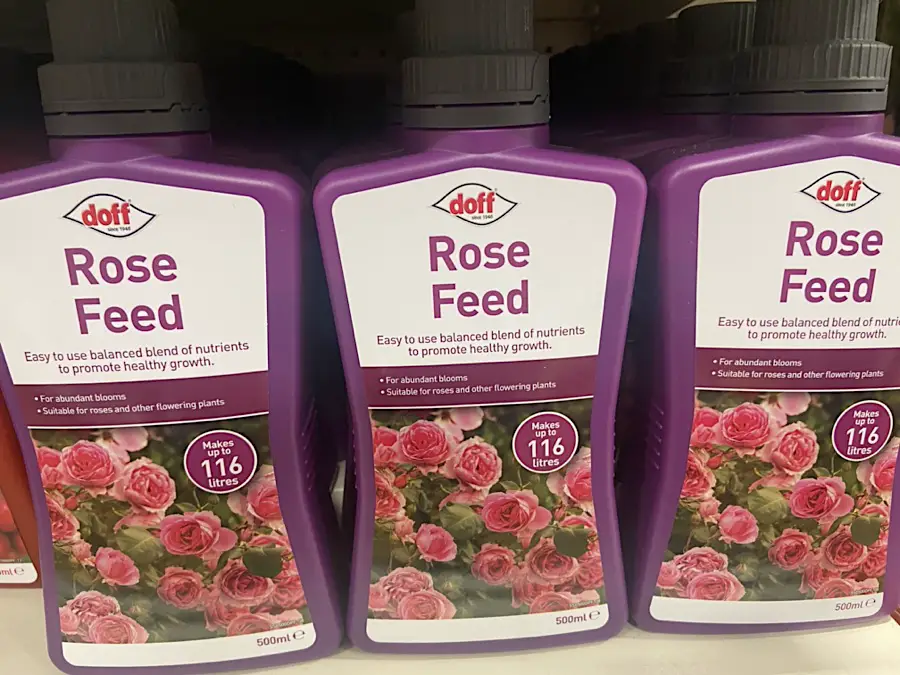
7. Deadhead blooms
While watering, sunlight and proper fertilizing are basic care that any plant needs for healthy growth and blooming, deadheading is a crucial step that should be regularly practiced to keep your mini roses blooming.
For those who are unaware, deadheading is simply removing the spent flower heads, allowing space to encourage new flower and foliage growth throughout and towards the end of the growing season.
It is the process of removing old growth and seed heads, this diverts the rose’s energies to promote new plant growth and re-flowering.
Removing faded rose heads stimulates mini roses to produce more flowers than to redirect all the energy in producing seeds i.e. rose hips. But then, rose hips are edible, so letting them grow is also an option!
In addition to encouraging full and longer blooms, deadheading keeps the plant looking at its best, thereby helping to meet your aesthetic or interior expectations as well.
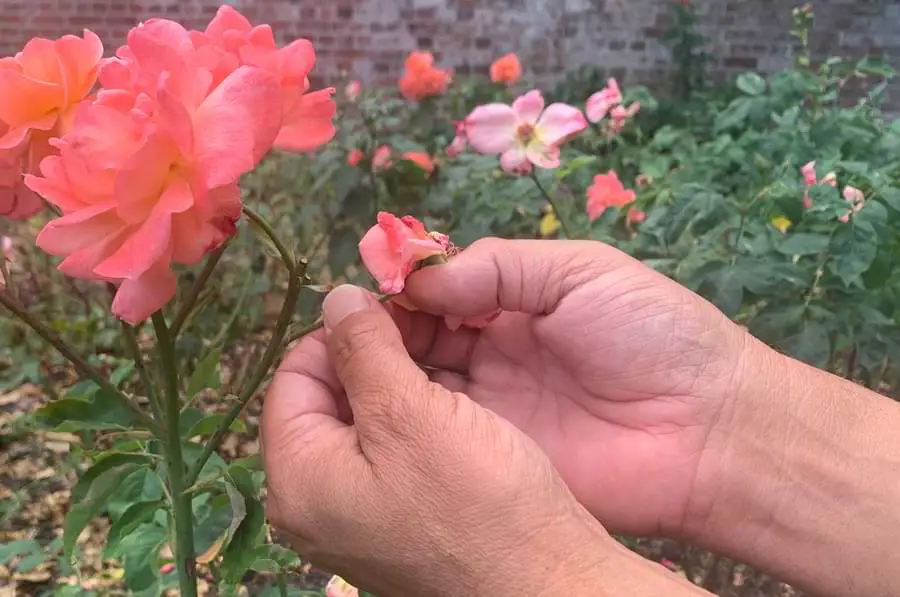
As you can see from the image above, I’m just nipping the flower portion off the rose once I know the bloom is finished. This should encourage more and better blooms. The same applied to any rose type.
How to deadhead mini roses
For deadheading avoid just plucking off the flowers with your hands, as it can damage the stem.
Damaged rose stems can attract diseases and cause die-back also known as “rose sickness”, affecting healthy and longer blooms. Use a sharp pruner for deadheading.
While some rose experts suggest deadheading during the end of the blooming season, some recommend deadheading as soon as you spot any faded or withered flowers and I’m inclined to agree.
This will reduce the energy the plant produces or directs to keep such blooms alive.
8. Pruning at the right times
Pruning is another key maintenance point that you need to practice to keep mini roses blooming.
While new plants don’t need pruning, as they mature you will have to prune by removing any dead branches or any type of cross branches that rub against each other.
Practicing annual pruning will encourage vigorous growth every blooming season. It will keep your blooms for longer and in general, is good for the overall health of your rose.
To do your pruning, make use of clean, sterilized, and sharp shears.
- Cut the stem at a 45° angle
- 1/4-inch above a leaf axil
- In an outward position
Leaving the center of the plant slightly taller than the sides will allow the flowers to grow out in a shapely manner.
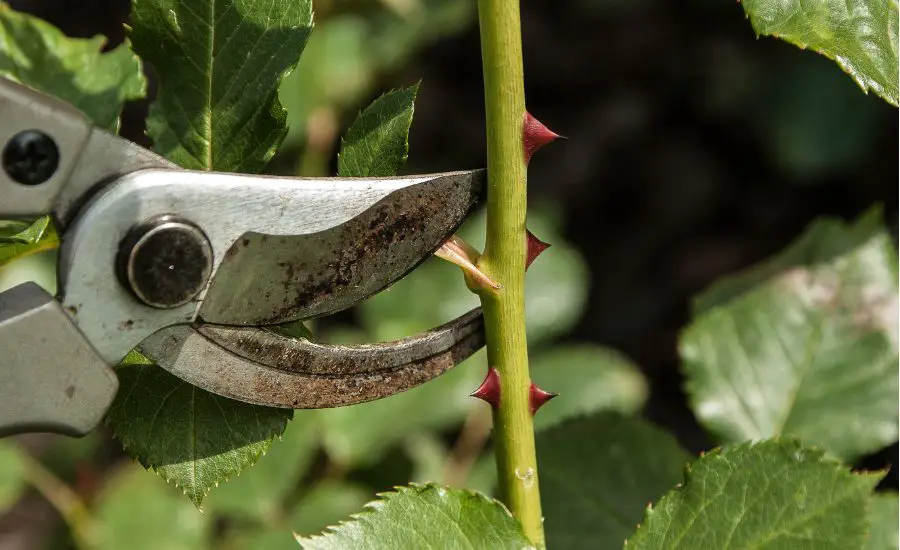
Pruning prevents your rose from turning woody with fewer blooms. Woody roses are more susceptible to damage in the winter as the wood can be brittle.
Pruning also stimulates the new growth of stems and branches that support a greater number of blooms …and is one of the most underrated methods to keep your mini roses blooming.
Even if you haven’t pruned your plant for quite some time, you can still review the growth of your blooms and keep them for longer the next season with careful pruning.
Here’s a more detailed guide on pruning your miniature roses.
However keep in mind that as much as pruning is important to keep your mini roses blooming, it’s crucial to understand when to do it.
Some rose varieties display their flowers on the previous year’s growth. If that’s the case, then if you prune in spring you can potentially remove the developing flowers and the rose won’t bloom until the next year.
For one-off bloomers, it’s advisable to carry out an annual prune after the blooming season is over in the late winter and early spring, to allow for new growth the next season.
If the mini rose variety is a continuous bloomer, then regular pruning throughout the season – including the winter – helps to ensure a tidy rose bush and most importantly avoids the need to cut off any developing flowers …or wood that will host the flowers the following season.
9. Correct winterizing
Proper winterization of the plant is also encouraged in between the mini rose blooming season, to keep your mini roses coming back each year, especially for those varieties that bloom throughout the year.
Proper winterization is a topic of its own, I’ve got a better guide [coming soon] on proper winterization for roses grown indoors and outdoors.
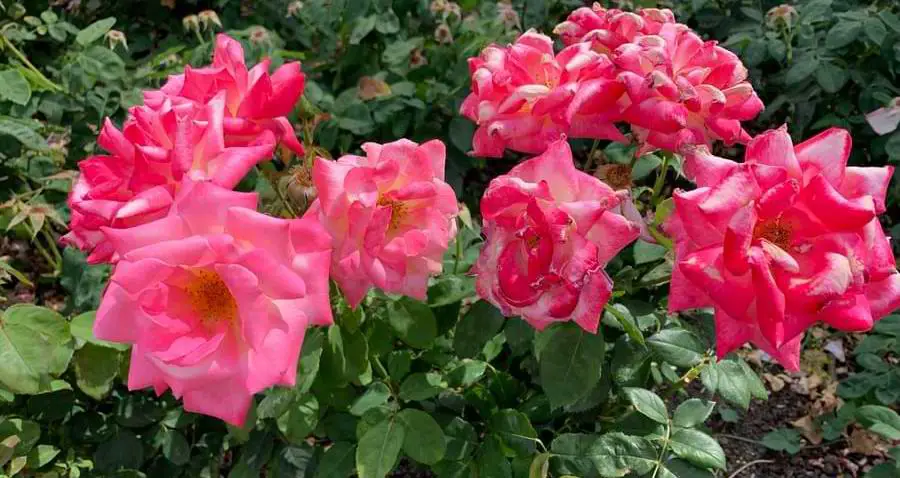
So as you can see from the image showing some of my roses above, I tend to get a pretty good yield of blooms. They’re strong flowers and they last quite some time!
Keep mini roses blooming ~ More roses help 🌹
I hope this has helped to answer the questions that will keep your mini roses blooming all season long. Some of it is perhaps labor intensive, but simply do as much or as many of these tasks as you can and it will all help.
Be sure to check out my other articles, and also my tools and resources page for more help!
Happy rose growing!

Hi, I’m Michael. My passion for roses was sparked a few years ago after visiting a dedicated community rose garden. So Rosehow.com represents my take, my learnings, and my help for anyone looking to grow, be proud of, and harvest roses.

